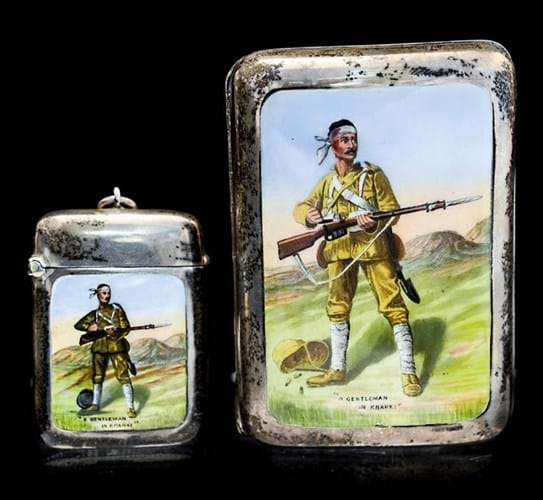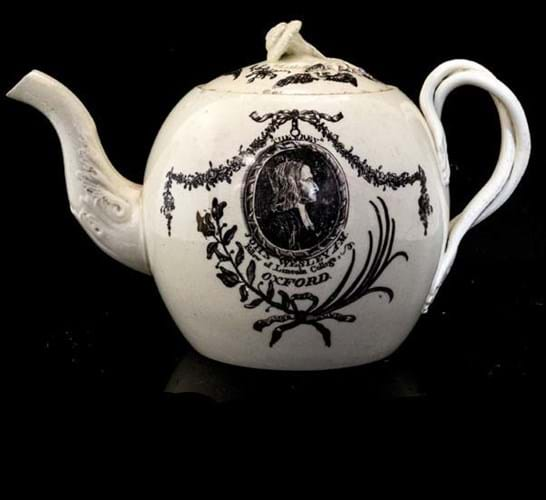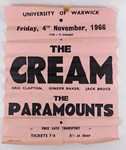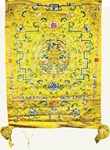
Items from the Peak District house of a leading businessman – typically pictures and good-quality Georgian and Victorian brown furniture – sold easily against sensible three-figure estimates.
Chinese top-sellers
However, the top-sellers among the 1760 lots offered in Etwall on December 18-20 (76% of which sold to total £557,000) were, almost, inevitably, Chinese ceramics.
The lady who brought them to a valuation day explained her father had acquired the three 6in (15cm) diameter bowls bearing Daoguang marks in the 1950s.
He was an inveterate collector on a very limited budget – his wife didn’t approve of his hobby – and never paid more than £1 for his purchases.
Enamelled variously to the exteriors and interior with panels of goats, landscapes, fruit and flowers, all were in good, unrestored condition and the lady was happy with estimates of £500-800 on each.
She was delighted when the bowls, illustrated above, made £24,000, £20,000 and £18,000.
Boer War collection

This silver and enamel cigarette case and vesta case with the iconic Boer War image of A Gentleman in Kharki took £1100 at Hansons.
The first of the two collections comprised 33 lots, often multiples, referring to the Boer War – ceramic mugs and tankards, postcards, silver boxes and spoons, printed cloths and books etc.
All bar four lots got away, mainly for three-figure sums, with one of the most eye-catching being a Birmingham 1899 silver cigarette case and vesta case enamelled with one of the most iconic images of the war. This was A Gentleman in Kharki, a bandaged but defiant Tommy with rifle and bayonet on some South African kopje.
It comes from the illustration by Richard Caton Woodville for The Absent-Minded Beggar, the poem Kipling wrote in 1899 as part of an appeal by the Daily Mail. Set to music by Sir Arthur Sullivan, it became hugely popular. All royalties went to the charity which raised £250,000 for soldiers and their families often left destitute back home.
Incidentally, the spelling of ‘kharki’ reflects how new to the general language the term was – the British Army having just realised the colour its men used on India’s North- West Frontier was more suitable than traditional scarlet when exposing troops to accurate rifle fire from Boer fighters on the veldt.
At Etwall the two cases made by Saunders and Shepherd, offered in a fitted presentation case, were estimated at £400-600 and sold at £1100.
A Gentleman in Khaki (spelt the customary way) also featured on a drinking lot which did unexpectedly well.
A pair of Copeland chalices depicting British victories with cameos of Queen Victoria and General Roberts was offered with four straight-sided beer glasses, two gilt-decorated with our khaki-clad hero and two etched with Lord Kitchener. Estimated at £80-120, the lot sold at £1600.
Methodist memorabilia
The second collection comprised pottery commemoratives relating to John Wesley, the great 18th century preacher who established Methodism.
Built over the past half century by a now retired Staffordshire Methodist minister, it included mugs, jugs, figures and plaques, mostly by Staffordshire factories. Mid-18th century creamware teapots topped the 63 lots, with the best-seller being the c.1750 cannonball form example illustrated above.
It was transfer printed with a portrait of John Wesley, Fellow of Lincoln College Oxford and, to the reverse, with verse and putti.
Against a £300-500 estimate, it sold at £1350.















